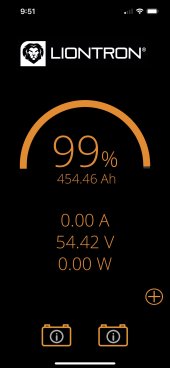I would not worry about the difference... What will happen is that while charging, the battery that is closer to the charge source will charge slightly faster... And the battery that is further away will charge slightly slower
And then once you are first battery is fully charged all the current from that battery will be shunted over to the one that is not quite reached full charge... And honestly with what you're describing they'll probably reach full charge within a few minutes of each other
Virtually the same thing will happen when discharging...
This is very similar to what happens when you have mismatched battery sizes in parallel with each other
With lithium iron phosphate it really just isn't a big deal
The big thing you need to watch out for is transient current between the batteries and just make sure that that transient current does not overwhelm the BMS or the wiring
What I mean to say is if one battery is significantly discharged relative to the other battery, the high charged battery will shift current to the low charge battery until the equalize
If you have 100 amp BMS then you can only allow for a hundred amps to transfer from battery to battery at any given time
But even with my massive difference in size 460 amp hours versus 1300 amp hours in my mismatched bank I've never seen more than 80 amps transfer between the different batteries and that was just when I initially brought the system online
In short don't worry too much about it





